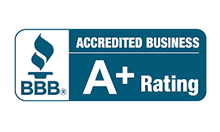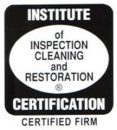When it comes to household health hazards, mold is among the most insidious. The spores from mold can cause a range of health issues, from allergies to respiratory problems. To safeguard your family’s well-being, it’s important to understand the common mold types that are found in most homes.
Mold is a type of fungus that thrives in moisture-rich environments. Once it takes root, mold can spread quickly and without warning. Mold spores can travel through the air, and once inhaled, they can cause a range of health problems.
So what is the most common type of mold found in homes? The answer varies depending on geographical location and climate, but overall, some mold types are more prevalent than others. In this article, we will discuss the most common types of mold you’re likely to encounter in your home.
Key Takeaways
- Understanding common mold types is crucial to protecting your family’s health.
- Mold thrives in moist environments and can spread quickly through spores in the air.
- The most prevalent type of mold in homes varies by location and climate.
- Mold can cause a range of health problems, from allergies to respiratory issues.
- To protect your family from mold, it’s important to practice preventative measures like controlling moisture and keeping your home well-ventilated.
Understanding Mold Growth and its Impact
Mold is omnipresent in nature and can thrive in a wide range of environments. However, mold growth indoors can pose substantial health risks and damage to both your property and personal items. Therefore, it is essential to understand how mold grows and how it can affect your well-being and living environment.
A mold spore can germinate when it lands on a damp, organic material that provides nutrition for its growth. Some common sources of moisture that can result in mold growth include leaking pipes, roof, or a humid environment. The mold spores can quickly spread throughout the air and reproduce under suitable conditions.
The impact of mold on your health can depend on the type of mold present and the level of exposure. Mold can release volatile organic compounds (VOCs) that can cause irritation of the nose, throat, and eyes. Exposure to mold can result in allergic reactions, respiratory problems, and even chronic health issues.
To help prevent mold growth, it is vital to address any underlying moisture issues promptly. By maintaining proper ventilation, monitoring humidity levels, and regular cleaning, you can minimize the risk of mold growth in your home.
Cladosporium – The Top Contender
Cladosporium mold is one of the most common types of mold found in homes across the United States, accounting for around 35% of indoor mold. This type of mold can grow in a wide range of environments, including on food, soil, and decaying plant matter. Indoors, it thrives in damp and humid conditions, such as bathrooms, kitchens, and basements. Cladosporium can have a variety of colors, ranging from green to brown or black, and it typically appears as small, powdery spots on surfaces.
Exposure to Cladosporium mold can lead to a variety of health symptoms, including respiratory issues, allergic reactions, and eye and skin irritation. If you suspect the presence of this mold in your home, it’s important to take prompt action to ensure your safety and prevent further growth.
To prevent Cladosporium mold growth, it’s essential to keep your home clean, dry, and well-ventilated. Address any water leaks or moisture issues immediately, and regularly inspect areas prone to dampness or humidity. If you do find Cladosporium mold in your home, it’s best to seek professional assistance in removing it safely.
Alternaria – A Common Indoor Mold
Alternaria mold is a type of indoor mold that commonly grows in areas with high moisture levels, such as bathrooms or kitchens. It can also grow on walls, carpets, and other surfaces that have been exposed to water damage. This mold can cause a variety of health risks if left untreated, particularly in individuals with weaker immune systems.
The characteristics of Alternaria mold include a velvety texture and a green or brownish-black color. It produces spores that can spread easily through the air, leading to respiratory issues such as asthma attacks and allergic reactions.
If you suspect the presence of Alternaria mold in your home, it’s important to take steps to eliminate the issue. This may include repairing any water damage, improving ventilation, and utilizing dehumidifiers to reduce moisture levels. Seeking professional mold removal services may also be necessary.
Don’t delay addressing Alternaria mold if you suspect its presence in your home. Protect your health and your property by taking action as soon as possible.
Penicillium – Commonly Found in Water-Damaged Areas
If your home has ever experienced water damage from flooding or leaks, you may be at risk of Penicillium mold growth. This mold type is commonly found in damp areas, especially those with high humidity levels, such as bathrooms, basements, and kitchens.
Penicillium can grow on a variety of materials, including wallpaper, carpet, insulation, and fabrics. It can also produce a strong musty odor, which can be an indication of its presence in your home.
Exposure to Penicillium mold can cause a range of health issues, including allergic reactions, respiratory problems, and asthma attacks. It’s important to take preventative measures to reduce the risk of Penicillium growth in your home.
| Potential Symptoms of Penicillium Exposure | Preventative Measures for Penicillium Growth |
|---|---|
|
|
If you suspect that you have Penicillium mold growth in your home, contact a professional mold remediation company for a thorough inspection and safe removal.
Aspergillus – A Widespread Mold Genus
Aspergillus is a widespread mold genus that includes various species commonly found indoors. These molds are usually found in damp places, such as bathrooms and kitchens, and can thrive in humid environments. Aspergillus molds grow rapidly, and if not treated, can release large quantities of spores into the air, negatively impacting indoor air quality.
The potential health risks associated with Aspergillus mold exposure range from mild allergic reactions to more severe conditions, such as lung infections and even asthma attacks. Individuals with weakened immune systems are especially susceptible to developing these health issues.
To improve indoor air quality and prevent Aspergillus mold growth, it’s crucial to maintain a dry environment. Inspecting and regularly cleaning areas that are prone to dampness, such as air conditioning units and pipes, can also help prevent mold growth. In addition, ensuring proper ventilation can help reduce humidity levels and promote a healthy living space.
| Characteristics of Aspergillus Mold | Health Risks of Aspergillus Mold |
|---|---|
| Fast-growing | Allergic reactions |
| Commonly found indoors | Lung infections |
| Thrives in humid environments | Asthma attacks (especially in individuals with weakened immune systems) |
Overall, it’s essential to be aware of the potential risks associated with Aspergillus mold growth to protect your indoor air quality and health. Regular maintenance, cleaning, and proper ventilation can all help prevent the growth and adverse effects of this widespread mold genus.
Stachybotrys Chartarum – Beware of “Black Mold”
Stachybotrys Chartarum, commonly known as “black mold,” is a type of toxic mold with a distinctive greenish-black appearance. This mold requires constant moisture to thrive and is often found in water-damaged areas of homes, such as leaking pipes, roofs, and windows.
Exposure to Stachybotrys Chartarum can cause a range of health problems, including respiratory issues, headaches, fatigue, and even depression. In severe cases, it can result in neurological damage and death.
If you suspect the presence of black mold in your home, do not attempt to remove it yourself. Instead, seek the assistance of a professional mold remediation service. They have the necessary equipment and expertise to safely remove the mold without spreading the spores further.
Remember, prevention is the best course of action when it comes to toxic mold. Be sure to maintain proper ventilation in your home, promptly address any water damage, and keep humidity levels below 50% to discourage mold growth.
Characteristics of Stachybotrys Chartarum:
| Color | Texture | Habitat | Health Risks |
|---|---|---|---|
| Greenish-black | Slimy or wet | Water-damaged areas | Respiratory issues, headaches, fatigue, depression, neurological damage, death |
Conclusion
Now that you have a better understanding of the different types of mold commonly found in homes, you can take steps to protect yourself and your property from potential adverse effects. Keep a watchful eye for the most prevalent molds like Cladosporium, Alternaria, Penicillium, Aspergillus, and Stachybotrys Chartarum (black mold). If you suspect mold growth, seek professional help immediately to mitigate the situation.
Preventive measures like maintaining proper humidity levels, repairing water damage, and improving ventilation can go a long way in preventing mold growth. It is also important to monitor your indoor air quality regularly to ensure a healthy living environment for you and your loved ones.
Remember, mold growth can have a significant impact on your health and property. By being aware of the most prevalent molds and taking necessary preventive measures, you can keep your home free from mold-related health risks and maintain a healthy living environment.
FAQ
What are the most common types of mold found in homes?
The most common types of mold found in homes include Cladosporium, Alternaria, Penicillium, Aspergillus, and Stachybotrys Chartarum, also known as black mold.
How does mold grow and what impact can it have?
Mold grows in moist environments where there is an organic food source. It can spread through airborne spores and can cause various health issues such as allergies, respiratory problems, and damage to property.
What is Cladosporium mold and where is it commonly found?
Cladosporium is one of the most prevalent types of mold found in homes. It can thrive in both indoor and outdoor environments, such as on damp surfaces, carpets, and HVAC systems. Exposure to Cladosporium mold can lead to respiratory symptoms.
What is Alternaria mold and where does it commonly grow?
Alternaria is a common indoor mold that grows in damp areas, such as bathrooms, basements, and kitchens. It can thrive on various surfaces, including wallpaper, fabrics, and damp wood. Exposure to Alternaria mold can trigger allergies and asthma symptoms.
What is Penicillium mold and where is it often found?
Penicillium mold is frequently found in water-damaged areas of homes, including leaky pipes, ceilings, and walls. It can also grow on decomposing materials and household dust. Exposure to Penicillium mold can cause respiratory problems and allergic reactions.
What is Aspergillus mold and where is it commonly found indoors?
Aspergillus is a widespread mold genus that can be found indoors in areas with high humidity, such as bathrooms, kitchens, and HVAC systems. Certain species of Aspergillus can produce mycotoxins and may lead to respiratory issues, especially in individuals with weakened immune systems.
What is Stachybotrys Chartarum, or “black mold,” and what should I know about it?
Stachybotrys Chartarum, commonly known as “black mold,” is a type of mold that is notorious for its potential to produce mycotoxins. It is typically found in water-damaged buildings, on materials with high cellulose content. Exposure to black mold can cause severe health problems, including respiratory issues, allergies, and even neurological symptoms in some cases.
How can I prevent mold growth and protect myself from its effects?
To prevent mold growth, it is essential to control moisture levels in your home by fixing leaks, using exhaust fans in bathrooms and kitchens, and ensuring proper ventilation. Regularly cleaning and drying damp areas, such as basements and bathrooms, can also help prevent mold. If you suspect mold growth, it’s important to address it promptly by contacting a professional mold remediation service.
Why is it important to understand the different types of mold found in homes?
Understanding the different types of mold commonly found in homes is crucial for maintaining a healthy living environment. By being aware of the most prevalent molds and their characteristics, you can take necessary precautions to prevent their growth and protect yourself and your property from the potential adverse effects of mold exposure.


















